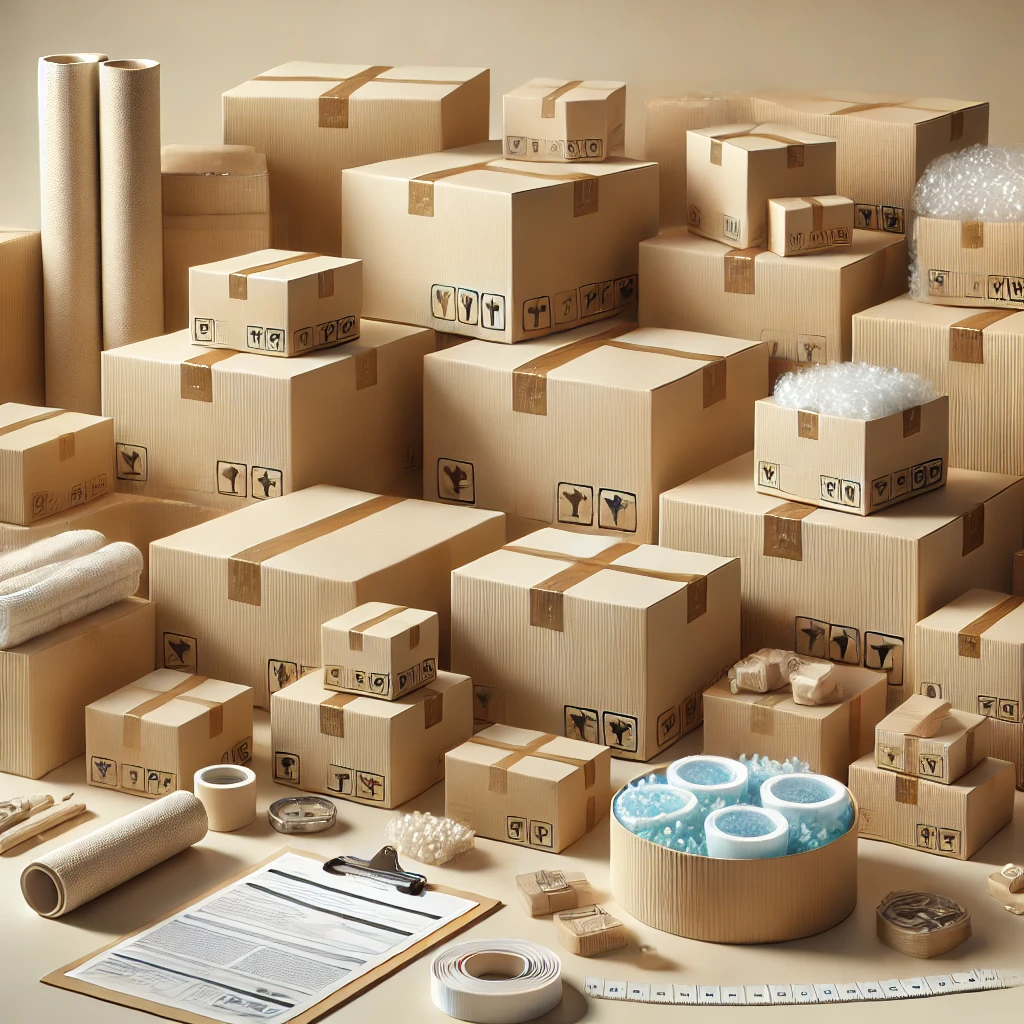You need to choose the right cardboard boxes for packing so that your things stay safe and it's easier to move, ship, or store them. There are so many different kinds, sizes, and strengths of boxes that it's easy to get confused. This guide has all the information you need to make the best choice, like what kinds and sizes of boxes are available, how long they will last, and how to make them your own.

What can you do with cardboard boxes?
Choosing the right box is the first step in making sure your package gets to its destination safely and that your things are stored in an orderly way. Choosing the right boxes lowers the risk of damage, which saves money on repairs, replacements, or claims. Packing boxes that are sturdy also help with packing because they keep things safe and stop them from moving around too much while they're being moved. Using professional packaging shows that a business cares about quality. This makes the customer experience better and makes them trust the brand more.
There are many different kinds of boxes made of cardboard.
There is a different kind of cardboard box for each type of packing. Here are some of the most useful and common types to think about:
-
Regular Slotted Containers (RSC): RSC boxes are made of one piece of cardboard with flaps that meet in the middle when the box is folded. These are the types of boxes that people use the most to ship and store things. These boxes come in different sizes, so you can put both light and heavy things in them. They are cheap and simple to put together.
-
Full Overlap (FOL) Boxes: FOL boxes are sturdy and will last a long time. The flaps on these boxes cover each other, which makes them even stronger and safer. They're great for keeping things safe that are valuable or breakable.
-
Die-Cut Custom Boxes: Die-cut boxes are a good choice for things that need extra protection because they are made to fit the shapes of those things. These boxes are great for electronics or glassware that are too big or too fragile to fit in a regular box.
- Specialty Boxes: These boxes are made for a certain use, like wardrobe boxes, file storage boxes, and boxes that are safe for food. They help protect important things. The best way to move clothes without folding them is to use wardrobe boxes with tall hanging rods. There are different kinds of boxes that can help with different problems, like keeping food fresh or keeping files in order.
Things to keep in mind when choosing the right box
-
Knowing what the thing needs
Consider how big, heavy, and easy to break the things you pack are. When you move big or heavy things, use double-wall cardboard to help hold them up. If the things are lighter and less fragile, single-wall boxes might be all you need. It might also be worth it to pay a little more for reinforced or custom-fit boxes to keep your valuables safe.
-
How to Send
The box you choose will depend on how you want to get it. When shipping things over long distances, double-walled cardboard boxes are better because they are more stable and can handle stress better. If the items are light and easy to carry, standard RSC boxes may be enough for local deliveries.
-
Where to put it and how long to keep it
The boxes need to be strong if you want to keep things for a long time. You can stack double-wall cardboard for a long time without it falling over. You might want to think about getting things that won't get mouldy or attract bugs if you live in a place with a lot of moisture.
Picking the right size for the box
Pick boxes that are the same size as what you're packing to save space and keep your things safe. Leave some extra room for packing material if you need to. Be very careful when you measure the length, width, height, and weight of your things. When you pick box sizes that fit your things well, they stay snug and are less likely to move or break while they are being shipped. Custom-sized boxes will fit your things better and lower the chance of damage if they are oddly shaped or too big.
Buying in bulk
If you need more than one box, it's usually cheaper to buy in bulk because many suppliers give discounts for bigger orders. This method saves you money and makes sure you have enough boxes to pack everything you need to.
Fluting and lining are two signs that a box is strong and will last a long time. Common types of cardboard are:
-
Single-Wall Boxes: These boxes are made with just one layer of cardboard, so they are good for things that aren't too heavy. They are inexpensive, but they might not be strong enough to hold heavy things.
- Double-Wall Boxes: These boxes are stronger because they are made of two layers of cardboard. They can hold more weight or be used to store things for a long time. They also keep things from getting crushed and let you stack them safely.
The Ratings for the Edge Crush Test (ECT)
You can find out how much weight the box can hold by looking at the Edge Crush Test (ECT) rating on it. For example, boxes with an ECT rating of 32 can hold things that aren't too heavy and won't break when you squeeze them. It is safer to move and stack boxes with a higher ECT rating. They can hold more weight and are stronger.
Cardboard boxes that are good for the environment
These days, many people and businesses pick choices that are good for the environment. Cardboard is a good material for packaging because it can be recycled and will break down on its own. Pick boxes that can be recycled or that are made from materials that have already been used. People who care about the environment will like these boxes because they are better for the environment. Look for boxes that say they are made from recycled materials to help lower the carbon footprint of packaging.
It's also very important that things can be reused. You can use cardboard boxes more than once if you take care of them. This is good for the circular economy because it makes less waste. Using eco-friendly packaging can make a business look better and draw in customers who care about the environment.
How to make cardboard boxes your own
Custom packaging boxes make it easy to find the right fit and style for your brand. Here are some common ways to make things your own:
-
Branding: Putting logos or messages on boxes makes them look more professional and makes the brand stand out. This method makes customers more loyal and gives businesses a great experience when they get their packages.
- If you get the right size, your things will be safe and won't move or break. This choice is great for things that don't fit in standard sizes, like electronics and fine art.
- Protective Inserts: Boxes with inserts on the inside give extra protection, which is great for fragile or expensive things that need more padding.
Also, think about how the box looks. For example, laminated finishes keep the box from getting wet, and matte or glossy finishes make it look better. People will remember your product longer if you choose the right finish.
How to find and buy things at a good price
Keeping to a budget is important, but picking the cheapest option can hurt quality. Cheap, low-quality boxes are more likely to break, which means you have to spend more money to get new ones, which could make customers unhappy. Instead, look for good options that will work for you. For example, single-wall boxes might be cheaper for things that aren't fragile, but double-wall boxes are better for things that need more protection.
Where to Find
There are a lot of ways to get boxes made of cardboard:
-
Local Stores: You can often see boxes in person at moving companies, office supply stores, and warehouse clubs.
- Online Stores: A lot of online stores have low prices and make it easy to find what you need. There are also websites that will give you a discount if you buy a lot of things at once. This can help you save money.





